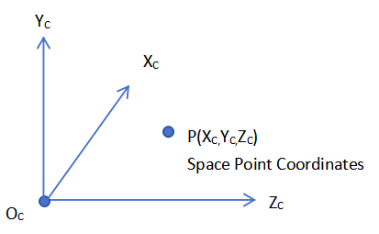Visual positioning technology applied to surveying GNSS receivers
Yaping Liu, Tersus GNSS 11 NOV. 2024
1. Definition of visual positioning
Visual positioning is the process of determining the position and orientation of a target in 3D space using image information acquired by a camera or other visual sensor. This is an essential function in applications such as navigation and extended reality experiences.
2.Core concepts of visual positioning
Image coordinate system
The image coordinate system refers to the coordinate system used to represent the position of the target in the image. Typically, the camera center serves as the origin. The horizontal coordinate denotes the number of columns, while the vertical coordinate denotes the number of rows.
3D spatial coordinate system
The 3D spatial coordinate system represents the position of the target in the actual scene. It is usually based on the world coordinate system and includes the x, y, and z axes.

In-camera parameters
These parameters consist of focal length(f), principal point coordinates, etc. The relevance pertains solely to the camera itself and depends on its internal parameters.
Out-of-camera parameters
These parameters, such as the position vector and rotation matrix, describe the relationship between the camera and the world coordinate system. They are used to convert the 3D spatial coordinate system to the image coordinate system.

The conversion is based on the triangle similarity relationship.

3.Applying visual positioning to surveying
the position, orientation, shape and size of an object can be reconstructed from images. The coordinates of object points, which are captured in images, can be obtained by applying visual positioning approaches without a physical contact to the surveying device. The Tersus Oscar-Trek uses a GNSS+IMU system along with a camera and computer vision algorithms to estimate 3D position and attitude. It enables precise remote point measurements by combining GNSS RTK with visual positioning directly in the field, providing globally referenced positions with centimeter-level accuracy.
Oscar Trek GNSS Receiver | Extreme RTK with Tilt Compensation and Photogrammetry (tersus-gnss.com)

Utilizing the [Visual Positioning] feature in the Tersus NUWA app allows you to easily pick, check, adjust, and save data, thereby reducing the time spent on fieldwork and data processing.

About Tersus GNSS Inc.
Tersus GNSS is a leading Global Navigation Satellite System (GNSS) solution provider. Our offerings and services aim to make centimeter-precision positioning affordable for large-scale deployment.
Founded in 2014, we have been pioneers in design and development GNSS RTK products to better cater to the industry’s needs. Our portfolios cover GNSS RTK & PPK OEM boards, David GNSS Receiver, Oscar GNSS Receiver, MatrixRTK [GNSS CORS Systems] and inertial navigation systems.
Designed for ease of use, our solutions support multi-GNSS and provide flexible interfaces for a variety of applications, such as UAVs, surveying, mapping, precision agriculture, lane-level navigation, construction engineering, and deformation monitoring.
Sales inquiry: sales@tersus-gnss.com
Technical support: support@tersus-gnss.com
